Seconded By: Salwan Georges
I’ve been shooting wildlife for over twenty years. With my photos, I’m trying to make a small contribution to the cause of nature conservation. And it may sound grandiloquent, but I would like to make this world a better place, both for people and for wild animals.
Today, Russia and the world are overwhelmed by many serious problems, and against this background, one of you may ask a reasonable question: “Sergey, do you really think that there are no more important things than worrying about tigers and leopards? Is it really necessary to think about it now?” My answer is yes, about that. Yes, it is today. Separating ourselves from big cats, losing touch with nature, we lose our sense of self-worth, we lose hope for a better future, we become selfish, spiritually poorer. We lose what makes us human.
Look around: every year poachers cut down centuries-old forests, uncontrollably killing both Siberian cats themselves and their main prey, deer and wild boars. I do not know how you can point a gun at such an animal and then sleep peacefully at night….
Let’s think about it together – can photos influence the fate of big cats? My answer is yes. I understand that I physically cannot prevent poaching. But I can do a lot more with the camera, it’s my silent weapon. It does not act instantly, its effect is not immediately noticeable, but it is there. Each photo in this exhibition is a real second of the life of living tigers and leopards. The powerful, invisible energy of nature photography influences people’s consciousness and makes us better. By publishing them, I give everyone the opportunity to reflect on how important it is to take care of the world around us.
There are only about 129 Amur leopards and 700 Siberian tigers left in the world, all of them priceless.
For me personally, the tiger and the leopard are symbols of Russia, and our task is to preserve them.
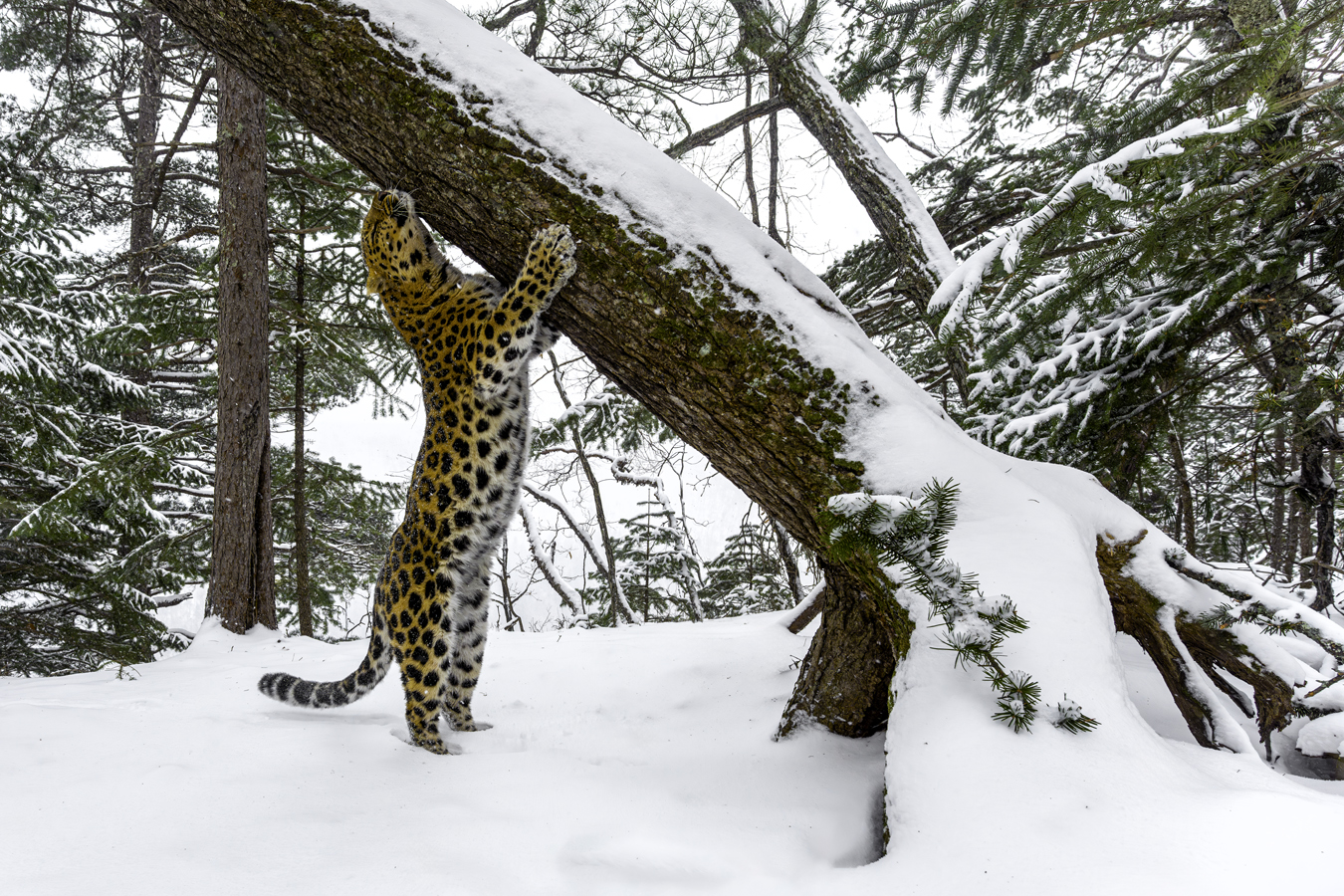
Amur Leopard marks a tree
The Amur leopard is a solitary, mostly crepuscular animal. Adults have a separate habitat, the boundaries of which they mark by marking behavior. They regularly walk around the territory, as well as visit certain places to leave their marks.
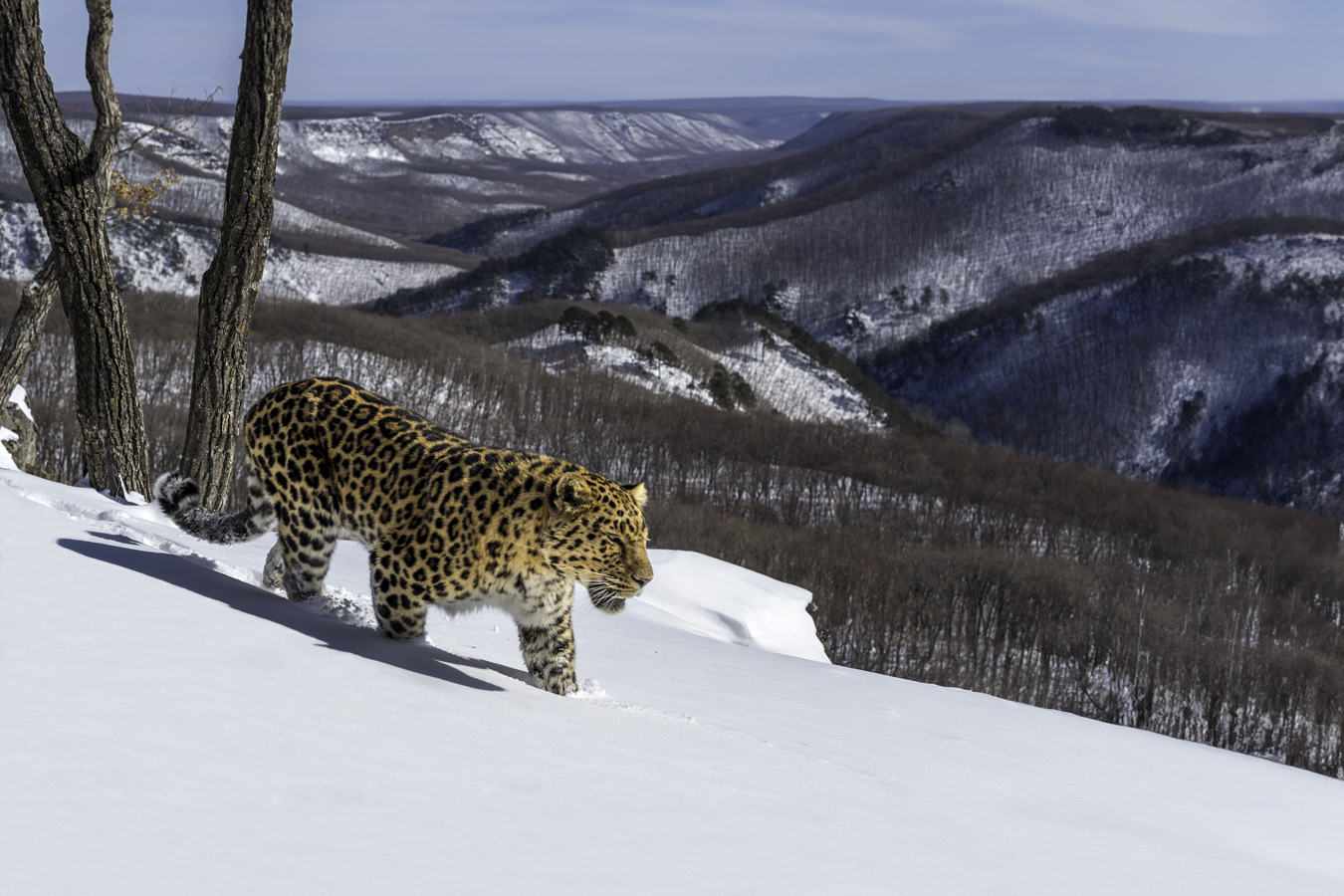
Amur Leopard patrols its territory
In the early 2000s, due to the fault of humans, the Amur leopard was on the verge of death: then there were just over thirty cats left in nature.. Much has been achieved since the creation of the Land of the Leopard National Park: the number of recorded individuals has almost tripled. Even during my six-year shooting, I noticed an increase in the number of Amur leopards, in 2019, when I started shooting, there were 97 Amur leopards, and in 2025 129 adult Amur leopards were recorded.
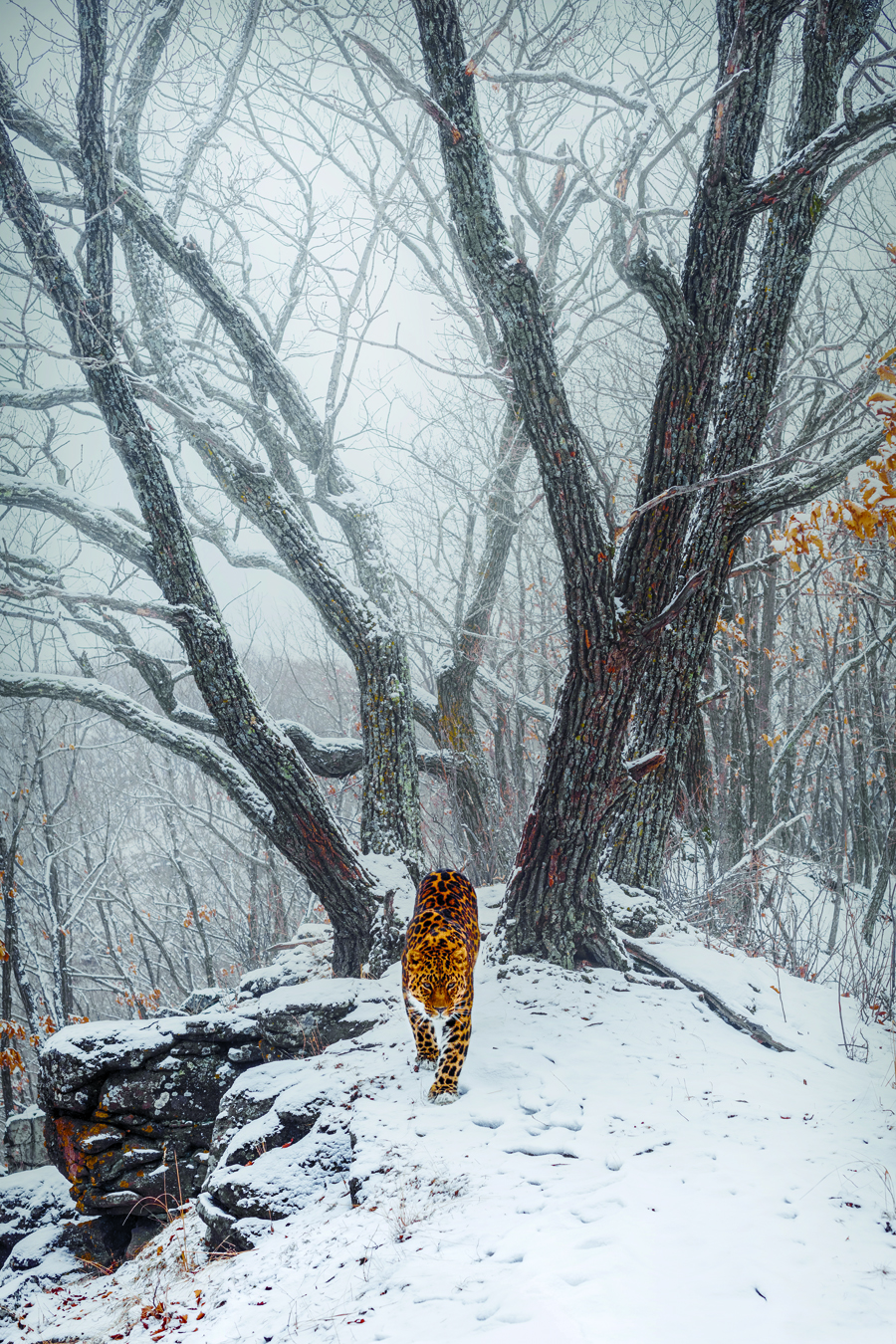
Amur leopard in the fog
In the early 2000s, environmentalists began to sound the alarm: the population size of the Amur leopard reached a critically low figure. Then it was decided to create the Land of the Leopard National Park, and the leopard population began to grow. Today it is the only place in the world where you can see the Amur leopard in its natural environment. Here they were saved from extinction.
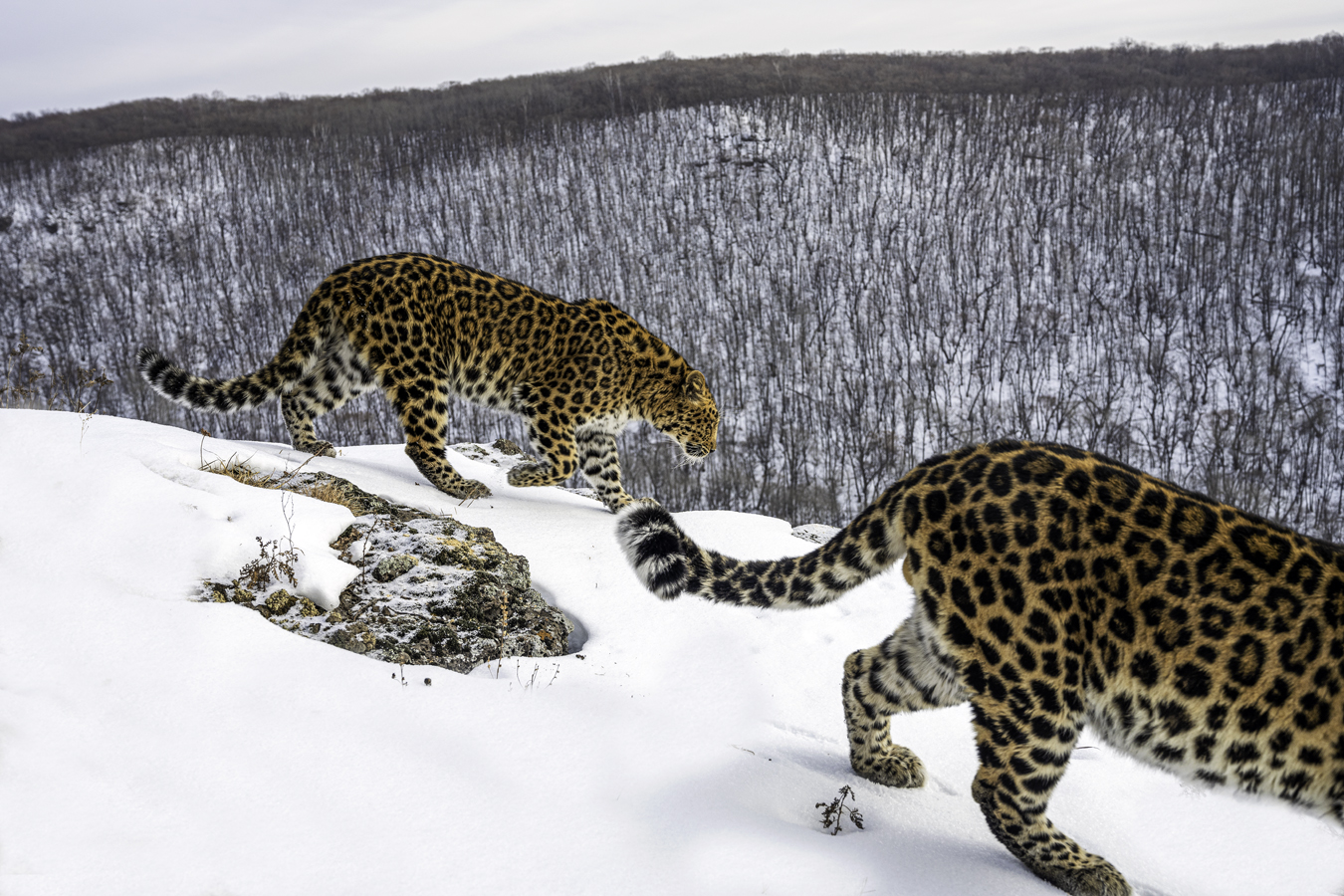
Amur Leopard Wedding
How many Amur leopards should there be in order for the subspecies to cease to be considered endangered? Experts say that the population will grow to 150-170 individuals in the near future, and this is enough to ensure its genetic stability. But there is one problem: by now, almost all suitable leopard habitats in the south-west of Primorye are inhabited by them, and for this reason the population has reached the limits of growth.
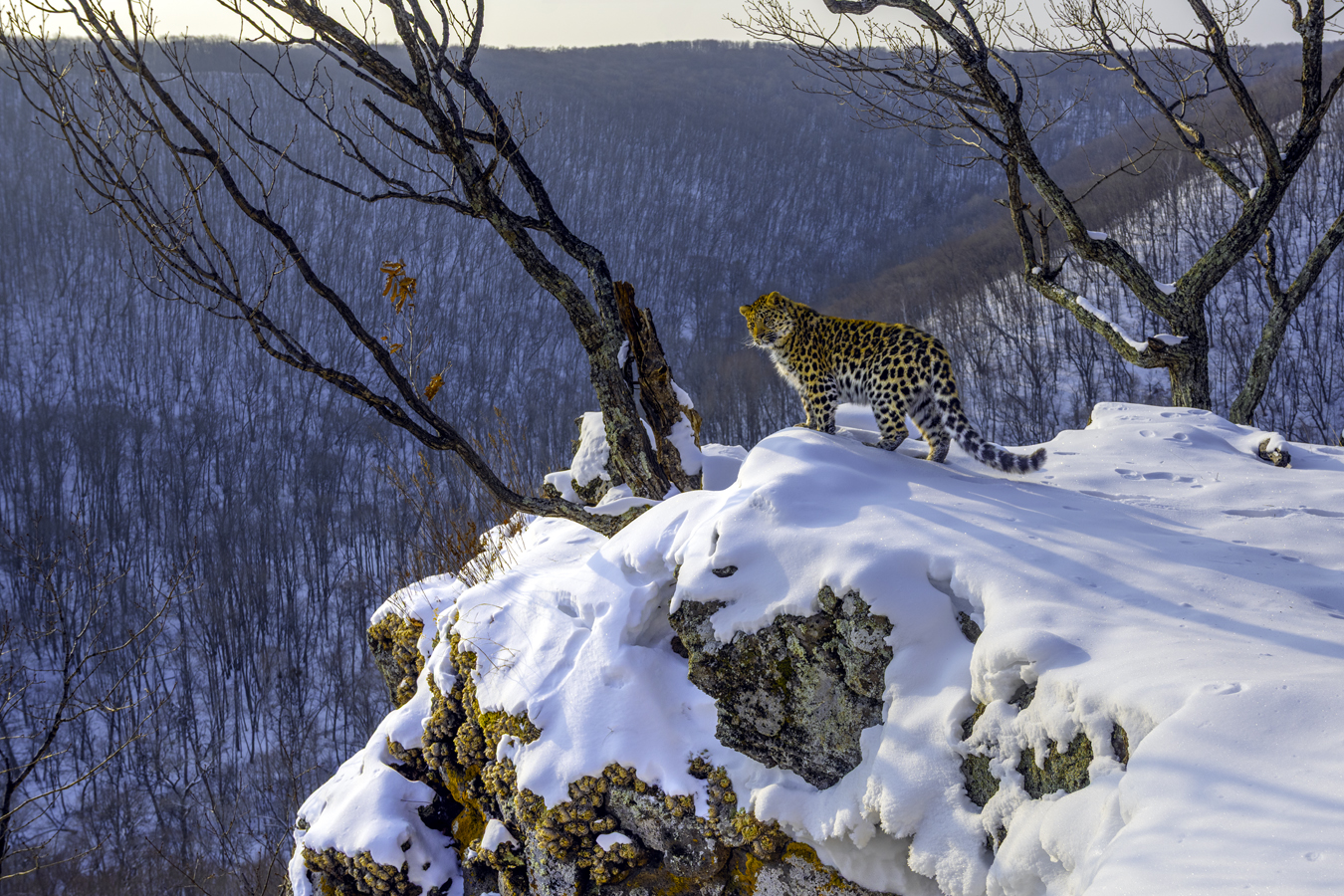
Amur Leopard
Amur Leopards are able to live in any landscape. Its permanent habitats are large mountain formations with ledges, cliffs and exits, alternating with gentle and steep slopes on which oak and cedar forests grow, while ungulates should inhabit the territory.
The leopard has chosen the optimal point for observation and is probably looking for potential prey, or maybe just inspecting its possessions.
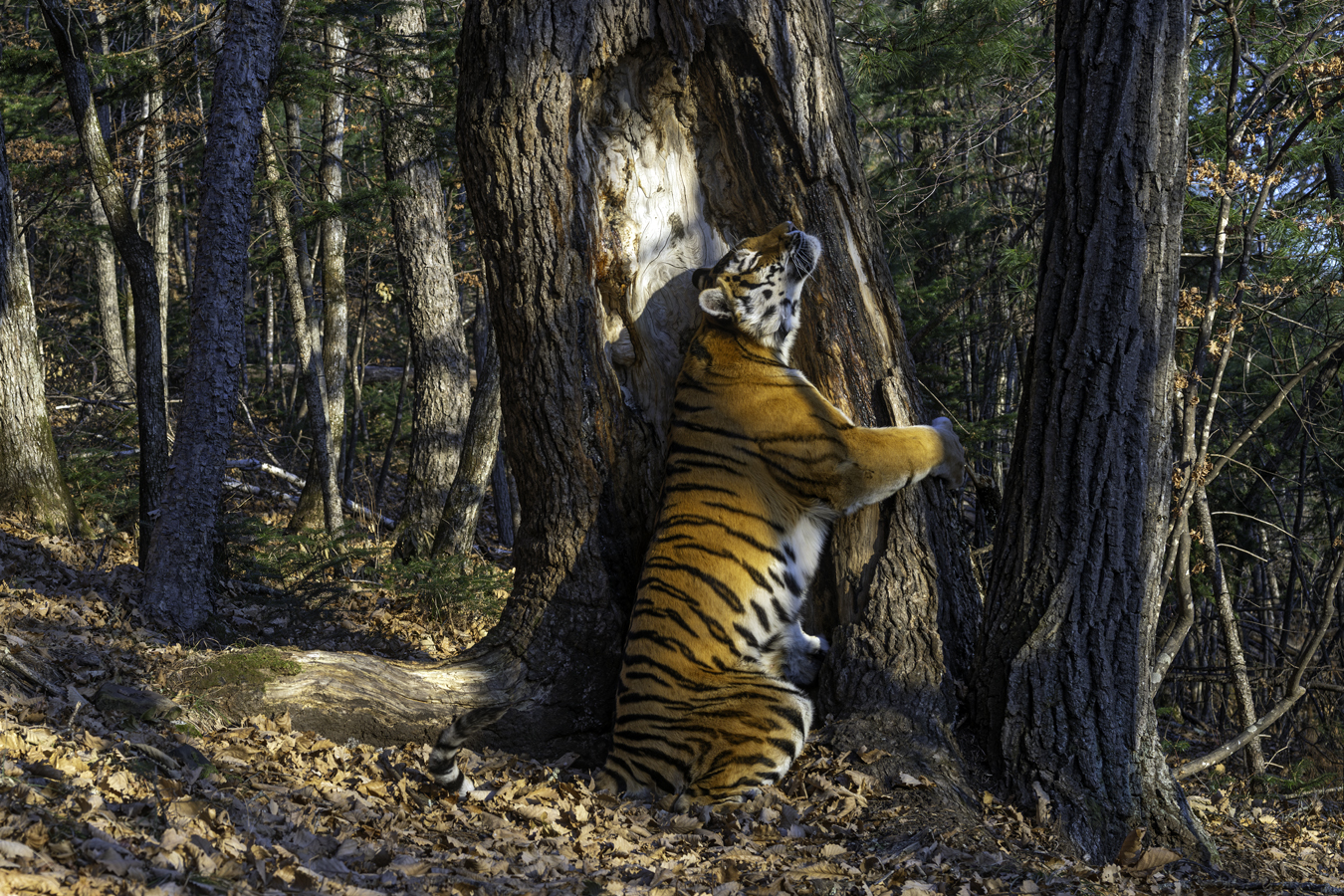
Embrace of the Siberian Tiger
The Siberian tiger is characterized by a solitary lifestyle, protecting its territory from aliens. A tiger leaves special markings on its territory, usually scent marks that are left with the help of glands or with urine – the predator sprays urine on trees or rocks. The smell tells the animals a lot of information about themselves, that the tiger who left the mark has recently been here.
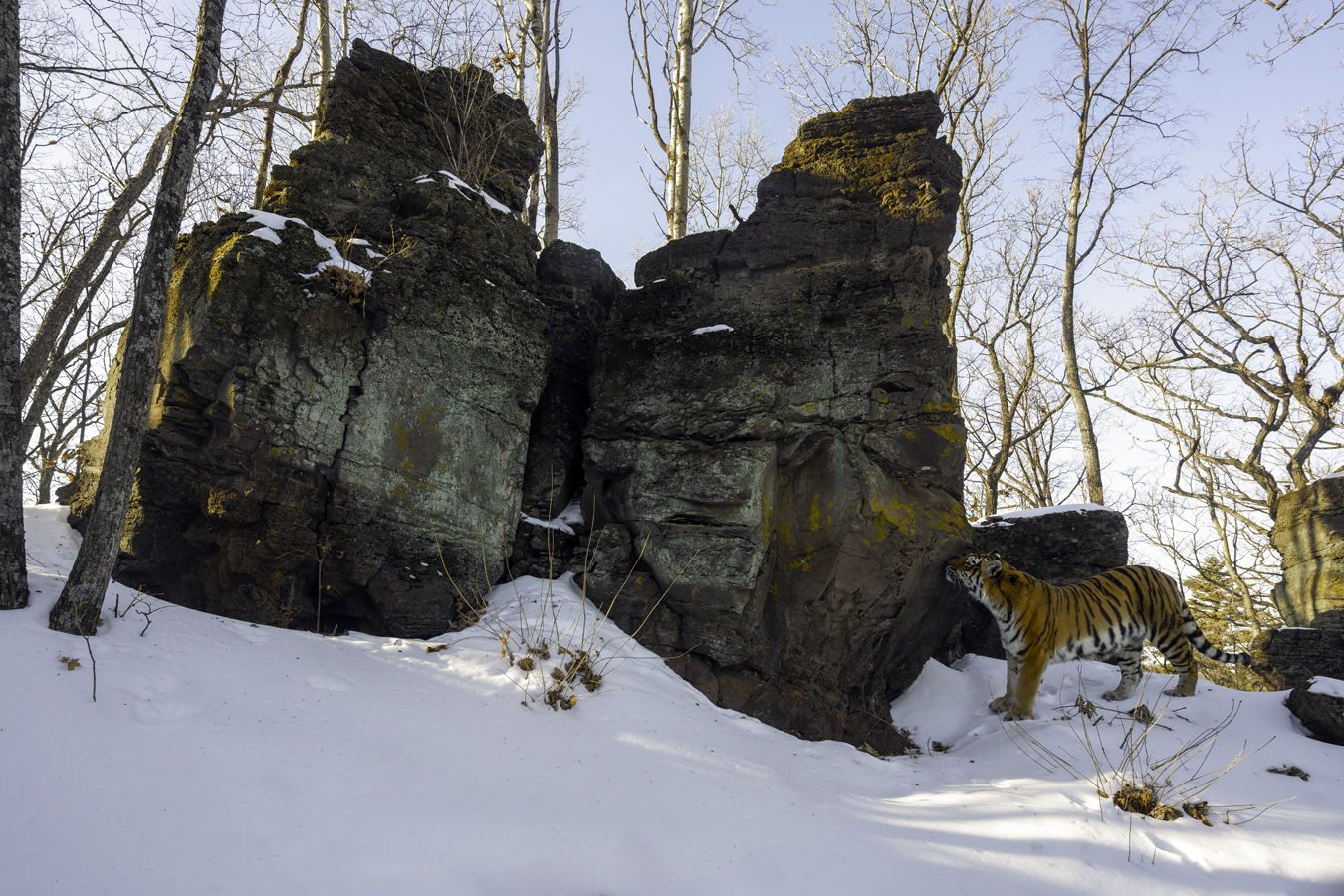
Siberian Tiger from the Red Book
In the 1930s, hunters exterminated 97% of Siberian tigers in the USSR, leaving only a few dozen individuals. After the introduction of a complete ban on hunting and restrictions on the capture of tiger cubs for zoos in 1947, the population gradually began to recover. In 1990, the Siberian tiger population increased to 350. Today, there are about 700 of them in the Far East. But this is not enough: Due to the destruction of habitats and illegal hunting, the Siberian tiger continues to be endangered and has the status of a rare animal: it is included in the Red Book.
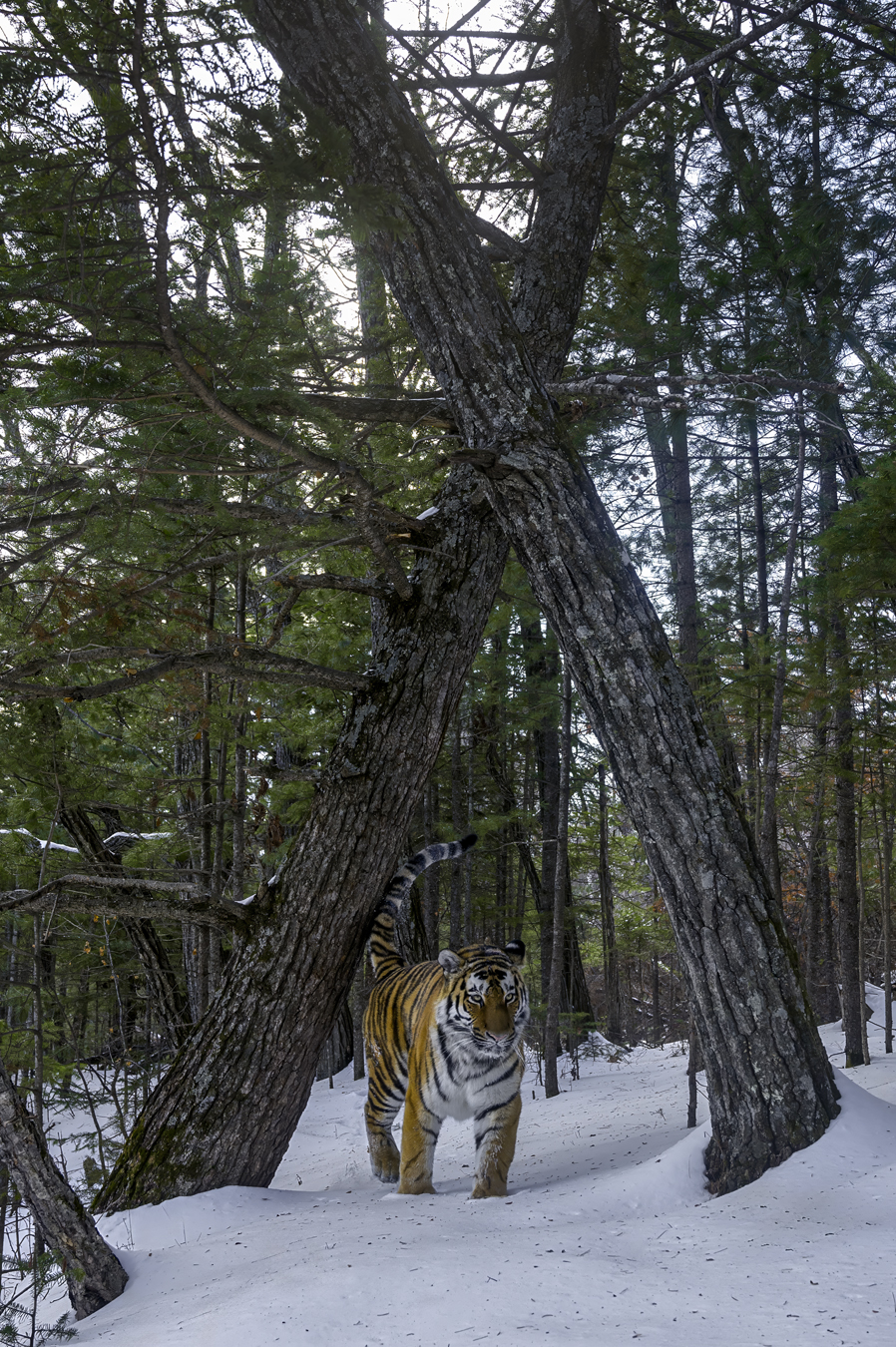
The owner of the Ussuri taiga
The owner of the Ussuri taiga: The Siberian tiger is one of the few animals that everyone has heard of. He is one of a kind: hypnotically handsome, strong, brave and confident, strict in his habits and smart. For Primorye, the tiger has become not just a symbol, but a real totem animal.
There are six species of tigers in the world, and the Siberian is the largest of them, thus being the largest cats on the planet. The Siberian tiger is the northernmost of all, he has mastered life in deep snow and temperatures -40 ° C. The Siberian tiger boasts thicker and longer fur (the longest among all tigers) than its more southern relatives, which protects the tiger from very severe frosts in the Ussuri taiga, and its wide paws help it walk through deep snow.
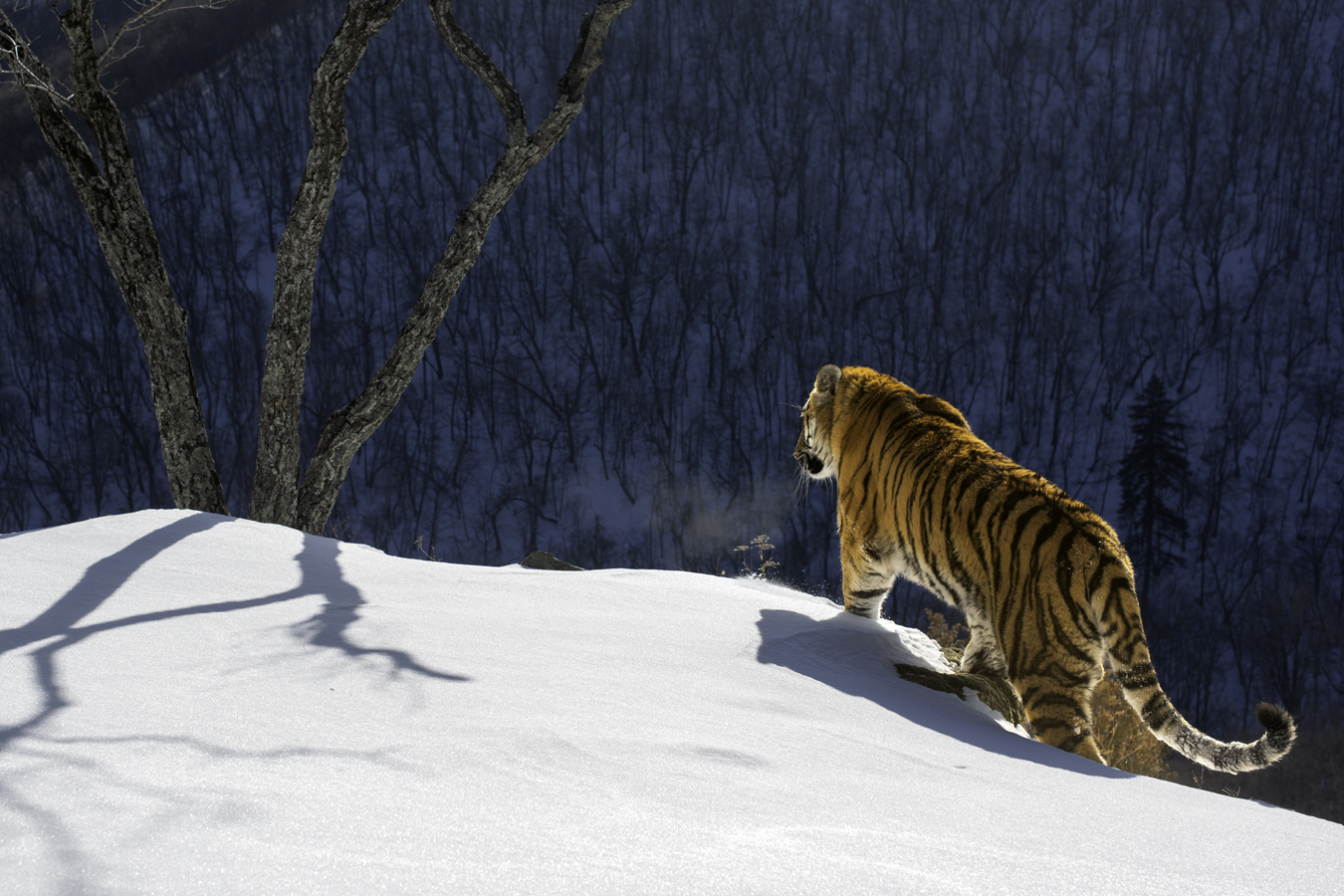
Siberian tiger
The degree of adaptation of the Siberian tiger is quite high, low winter temperatures do not affect its vital activity: thick fur protects the tiger from frost, and powerful wide paws help to walk on snow.
The tiger walks slowly and even impressively around his possessions. The snow gently springs under his huge paws. He seems thoughtful and absent–minded, but this is only an appearance – at any moment he can turn into a formidable beast that has no equal in strength. His bright red outfit is equally beautiful both under the rays of the sun and dusted with fluffy snow
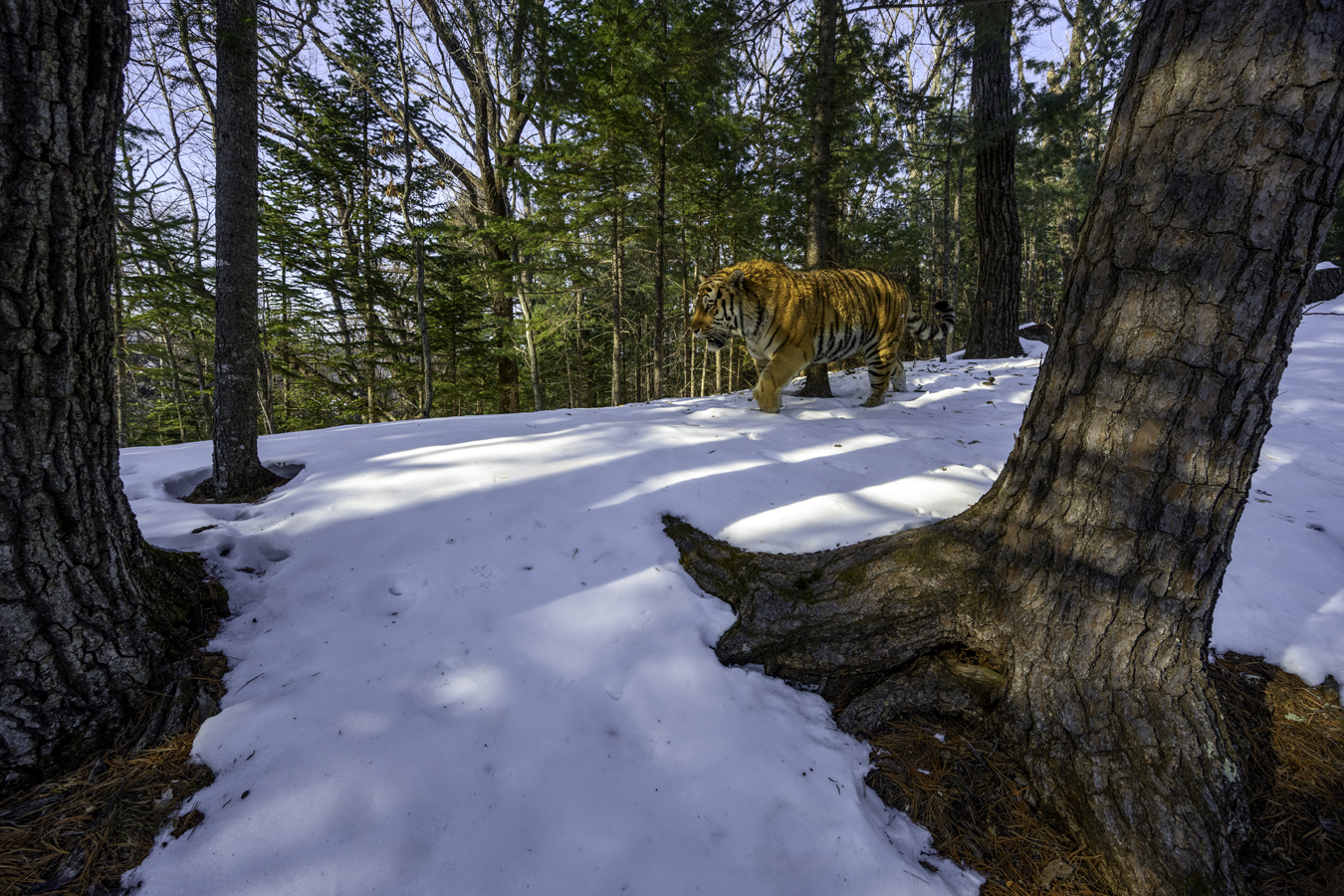
Siberian tiger in the taiga
The Siberian tiger is the crown of perfection in the animal world. The main color of his coat is rusty yellow with black stripes. They are less common on the chest, neck, and front paws, while they are particularly pronounced on the back and hind legs. At first glance, this coloring seems blatantly unmasking. However, in the natural conditions of the Ussuri taiga, this coloration perfectly masks the predator. When a tiger walks through the taiga, among the leafless shrubs, black, yellow and white colors merge, and the beast takes on a monotonous brown-gray color, and it is difficult to see the tiger even at close range.